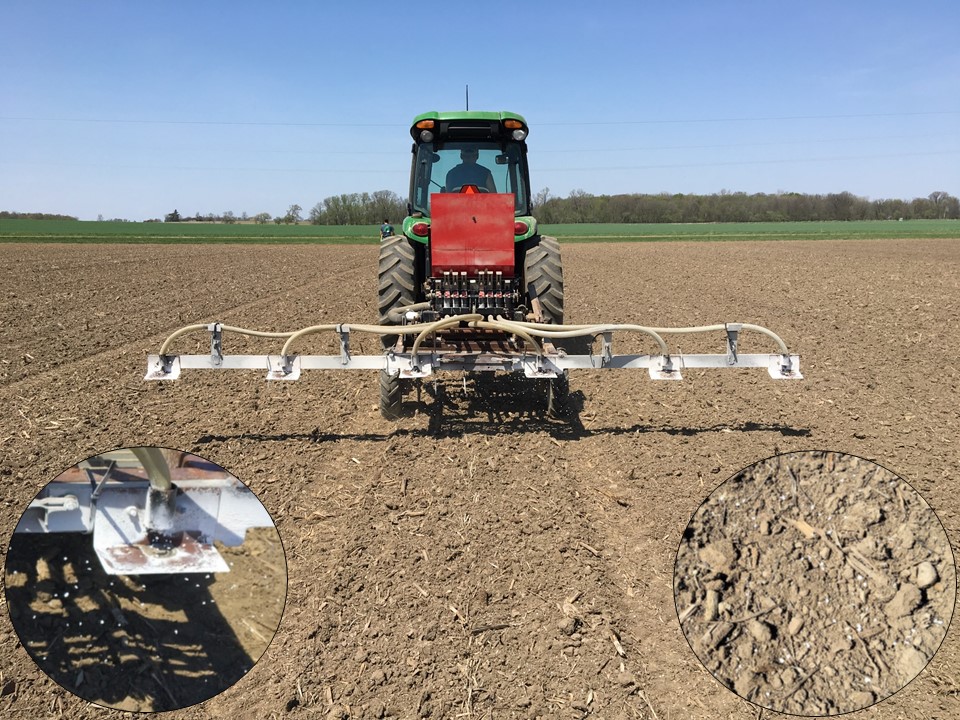7. Application Accuracy In Research. Part 1: Broadcast Dry Fertilizer

Crop research can be expensive in a number of ways. There is the cost of the researchers to establish an experiment (time, materials, data collections, etc). There is the time from experiment establishment to harvest (nervous time waiting). There is the cost of a lost experiment due to weather disaster (meaning you may have to repeat it next year making the results even farther away). And there is the loss of an experiment due to misapplication of the treatments. And this is often a hidden cost since it may not be known that this happened. It is often assumed that the researcher is able to accurately apply the treatments, so it is probably worth going over this in the early treatment discussions.
At the North Central Research Station, we take great pride in our ability to provide accurate applications. As far as planting and fertilizer applications, application accuracy is ensured with Greenstar technology and AgXcel pumps and meters. All of these applications are digitally recorded during the application and can be downloaded and verified later, using GPS and Greenstar technology. Crop protection and in-crop fertility applications are also digitally recorded during application to ensure documentation of correct application.
But what about broadcast application of dry fertilizers? This can be nutrient treatment or as part of a uniform field application to ensure nutrients are not limiting. There are applicators like drop spreaders or spinner spreaders, but these are far from accurate. Some researchers use hand-cranked spinner grass-seed spreaders, which may be adequate for small plots, but certainly not for large plots used at the NCRS. To address this, the North Central Research Station developed and regularly uses an accurate “Air Machine” type spreader. This uses a Gandy fertilizer spreader combined with a PTO-driven fan for accurate application of any of a number of dry fertilizers.
Accuracy is ensured by: 1. Being a ground-driven applicator, speed is not a factor (however, speed must not exceed the ability of the applicator to uniformly apply the desired rate). 2. Different dry fertilizers are calibrated with the spreader at different settings to get an accurate delivery setting. This is completed by directing the output from several air tubes to collection buckets to determine output over a set distance. We currently have calibrations for muriate of potash, DAP, MAP, urea and ammonium sulfate. Other uniformly pelletized products could easily be set up for application. We apply each nutrient separately to ensure accuracy, rather than an application of blends. 3. The application width is fifteen feet with delivery from six tubes and dispersion with deflector plates. This is usually followed by soil incorporation for plots to be planted in conventional tillage, or simply left on the surface for no-till. Additionally, this practice has been used for wheat topdress with urea as well as in-season applications of urea on corn. The possibilities are numerous, but the bottom line is accuracy. And you will get that at the North Central Research Station.
Dr. Jerry Wilhm August 15, 2020

